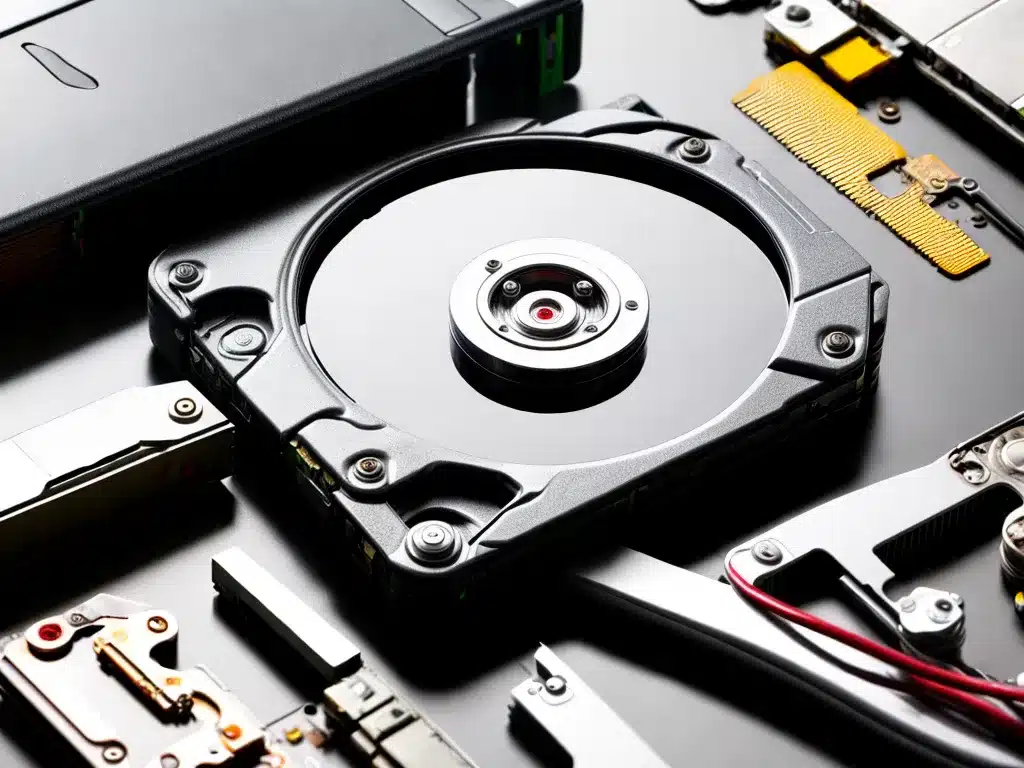
Try Recovering the Data Yourself
If you have a corrupted or failing drive, the first step is to try recovering the data yourself before taking more extreme measures. Here are some things you can try:
-
Use data recovery software. Programs like Recuva or EaseUS Data Recovery Wizard can scan your drive and recover deleted files. Follow the instructions to scan your drive and restore files.
-
Connect the drive to another computer. If the drive is corrupted but still somewhat readable, connecting it to another PC as a secondary drive may allow you to access files. You can then copy them off the drive to safety.
-
Remount the drive. If the drive is disconnected, try unplugging it and plugging it back in. This may allow your operating system to remount the drive and read files again.
-
Check the disk for errors. Use your operating system’s error checking utility (like CHKDSK in Windows) to scan for and repair disk errors. This may make some corrupted data readable again.
-
Access the drive from a boot CD. Using a Linux-based boot CD allows you to bypass the installed OS and directly access the drive for recovery. Ubuntu has data recovery tools built in.
If you are unable to recover data yourself, don’t give up hope. A professional may still be able to recover your data.
Send the Drive to a Professional Data Recovery Service
If DIY recovery attempts fail, the next step is to have the drive professionally recovered. Here’s how professional data recovery works:
-
Evaluation – The drive is examined to determine the cause of failure and estimate recovery feasibility. This is sometimes free.
-
Recovery – Technicians disassemble the drive and replace damaged components or repair the filesystem to access data. Advanced techniques like disk imaging may be used.
-
Return or On-Site Recovery – Once data is recovered, it is copied to new media or a drive of your choice. Or, on-site recovery at your location may be possible for critical cases.
Cost for professional recovery varies widely, anywhere from $300 to $3000+, based on the drive and type of damage. However, it greatly increases the chances of getting data back intact.
Here are some things to keep in mind when choosing a data recovery service:
-
Reputation – Pick a well-reviewed company known for high success rates. Avoid unreliable low-cost options.
-
Capabilities – Choose a company that can handle your specific type of drive failure. Not all companies can repair all drive types.
-
Security – Ensure they have secure facilities and processes to protect your sensitive data. Ask about their security protocols.
-
Clean room – Reputable companies use ISO certified clean rooms to prevent damage during drive repair and recovery. This is very important.
-
Experience – Look for years of experience and high recovery success rates. You want experts who can maximize the chances of restoring your data.
With the right data recovery company, there is an excellent chance your lost data can be rescued from even severely corrupted drives. The cost is high, but recovering critical data is often worth it.
Be Prepared for Next Time
While professional recovery is often successful, there are steps you can take to be prepared for potential data loss in the future:
-
Backups – Regularly back up important data to a separate device or the cloud. This protects you when a drive fails.
-
RAID – Use a RAID array so data is copied across multiple drives. This allows recovery if one drive fails.
-
Drive health monitoring – Monitor your drives for signs of failure like bad sectors and SMART errors. Replace failing drives.
-
Handle drives carefully – Dropping or jarring a drive while powered on can cause physical damage. Always eject properly.
-
Make a recovery plan – Know your options in advance before disaster strikes. Have a recovery company selected and funds allocated.
Planning for potential data loss and having backups ready allows you to respond quickly if needed. While recovering data from a corrupted drive is difficult and expensive, being prepared helps minimize disruption and loss.












